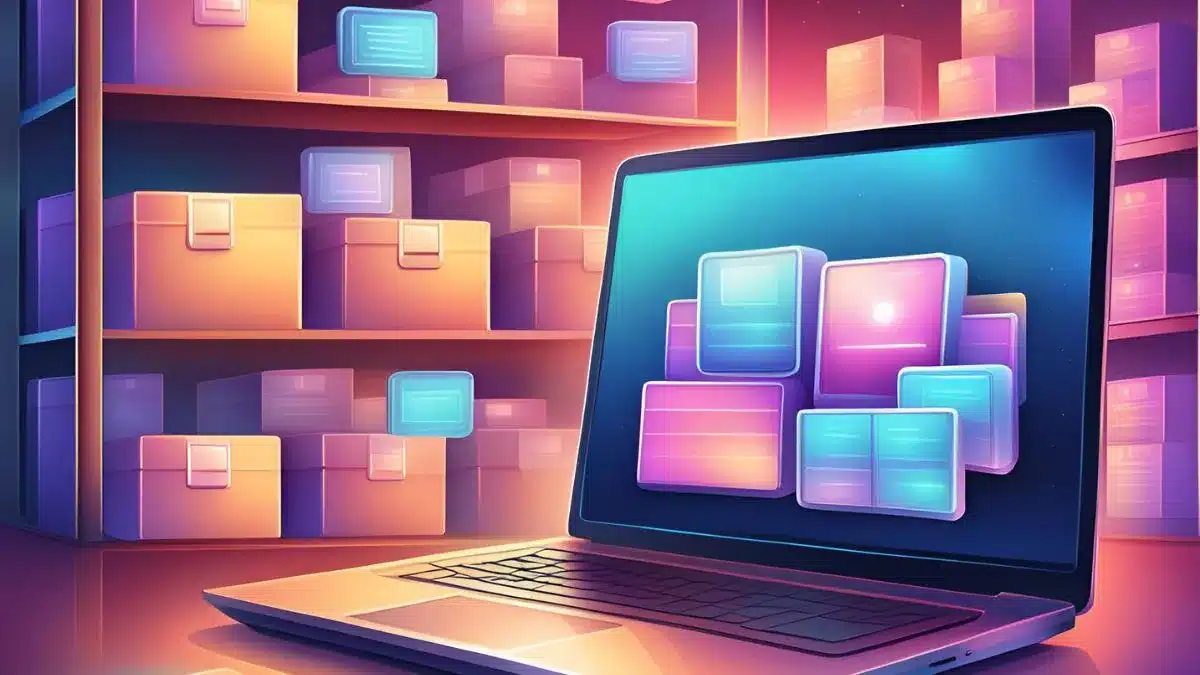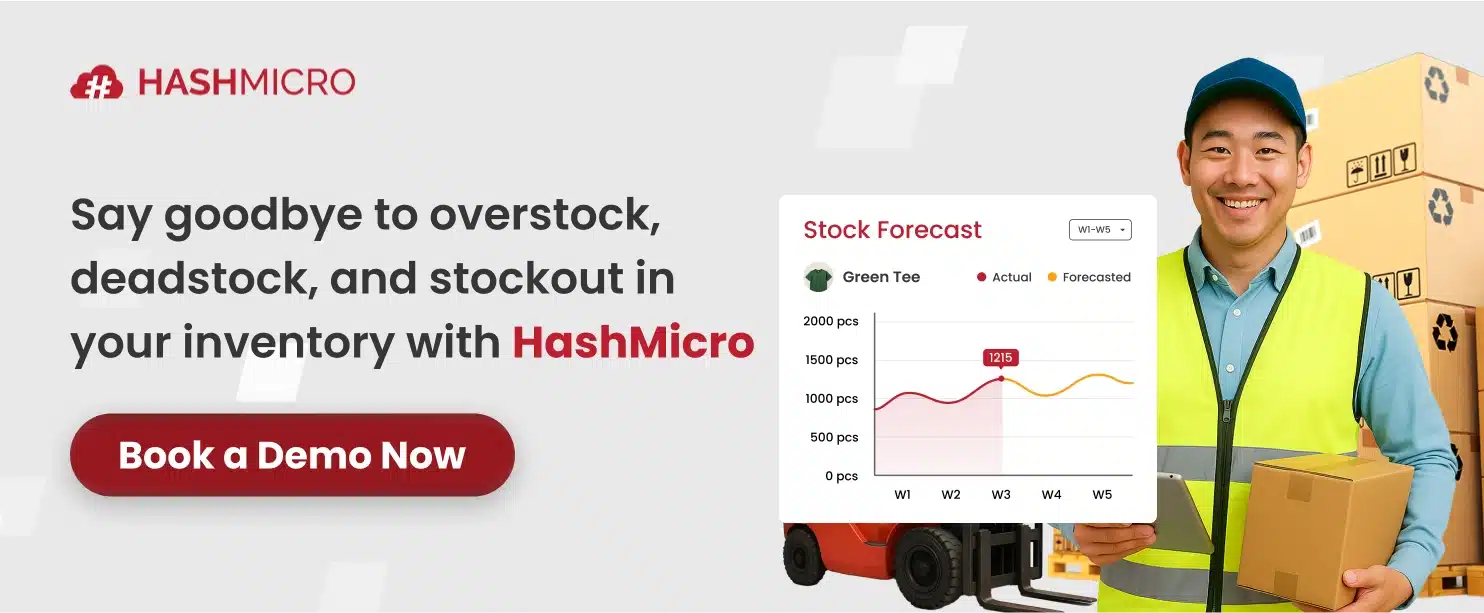Without the right software, I often find that businesses struggle to track inventory in real time, leading to missed sales opportunities. Managers also face difficulties in getting a complete view of stock across multiple locations, making it challenging to optimize the entire supply chain.
Cloud-based inventory allows businesses like ours to manage and track inventory efficiently. According to a survey, in 2022, Singapore’s digital economy contributed approximately 17.3% to the country’s GDP, up from 13% in 2017. This growth, at a compound annual rate of 12.9% over five years, underscores how digital technology drives competitiveness in today’s fast-evolving economy.
That’s why embracing cloud-based inventory management is essential for thriving in Singapore’s dynamic market. For best practices and strategies, explore this comprehensive guide to cloud-based inventory for businesses and try our free demo to stay ahead in the digital landscape.

Key Takeaways
|
What is Cloud-Based Inventory Management?
Cloud-based inventory management software lets me track and manage inventory anytime, anywhere with an internet connection. With features like barcode scanning and low-stock alerts, it offers flexibility and control across multiple locations.
By integrating logistics management software, I can automate key processes like stock counting and barcode scanning, minimizing human error. This automation saves time, boosts accuracy, and allows me to focus on strategic business growth.
What are the Different Types of Cloud Based Inventory Management?

Understanding the various types of cloud-based inventory management systems is essential for choosing the right solution that aligns with your business needs. Each type offers distinct advantages, allowing me to optimize your inventory processes and enhance overall efficiency.
The following are the different types of inventory management software and how they can benefit my business operations.
1. Centralized inventory management
When managing inventory across multiple locations, centralized inventory management consolidates all inventory data into one central system. This method maintains consistency and accuracy, ensuring every location stays in sync.
2. Distributed inventory management
On the other hand, distributed inventory management allows you to handle inventory separately across various locations. This type of management is particularly beneficial for businesses with multiple warehouses or stores, offering greater flexibility and reducing the risk of stockouts at individual sites.
3. Just-in-Time (JIT) inventory management
Meanwhile, just-in-time inventory management focuses on reducing holding costs by ordering stock only when it’s needed. This approach is perfect for businesses aiming to minimize waste and maximize efficiency, as it closely aligns inventory levels with actual demand.
4. Real-time inventory management
Lastly, real-time inventory management provides up-to-the-minute tracking of your inventory. This ensures that you always have an accurate view of your stock levels, which is essential for making quick, informed decisions and avoiding costly errors.
Features of Cloud-Based Inventory Management
As my business evolves in this digital age, I’ve learned that the tools we use to manage operations must keep pace. Cloud-based inventory management offers powerful features that enhance efficiency, accuracy, and accessibility, making it an essential part of modern business operations.
Here are some key features I consider crucial for building an efficient cloud-based inventory system:
- Inventory monitoring: One of the standout features of cloud inventory management is its ability to provide real-time visibility into your stock levels. This ensures that you’re always informed, allowing you to make timely decisions and avoid stockouts or overstocking.
- Centralized data storage: Cloud-based inventory systems offer centralized data storage, making it easy to access your inventory information from anywhere. This centralization ensures that all team members work with the same accurate data, enhancing collaboration and reducing errors.
- Inventory tracking and reporting: With streamlined tracking and reporting, cloud inventory management simplifies monitoring stock movements and generating reports. This feature saves time and provides valuable insights that help you optimize your inventory strategies. Additionally, the inventory aging report helps track the age of your stock, enabling you to make data-driven decisions on stock rotation and reducing the risk of obsolescence.
- Inventory replenishment and ordering: Automation is key in cloud inventory management, particularly regarding replenishment and ordering. This feature reduces manual work, minimizes human error, and ensures that stock levels are always optimal to meet customer demand.
- Integration with other business systems: A cloud-based inventory system seamlessly integrates with other business tools, such as accounting and sales. This integration creates a unified ecosystem that enhances efficiency and aligns all your operations.
If you want more comprehensive features that can be tailored to your specific business needs, consider HashMicro’s inventory management solution. Try our free demo and consult directly with HashMicro’s professional team.
Challenges in Cloud Based Inventory Management

While I’ve seen how cloud-based inventory management brings many advantages, it’s not without its challenges. As my business grows more dependent on these systems, I’ve realized the importance of understanding and addressing potential obstacles to keep operations running smoothly.
By recognizing these challenges early, I can take proactive steps to mitigate risks and fully harness the benefits of cloud inventory software.
1. Data security and privacy considerations
One key challenge in cloud inventory management is safeguarding data security and privacy. While cloud platforms provide strong security features, businesses must be proactive in protecting sensitive information.
Implementing encryption, regularly updating security protocols, and training staff on best practices are essential. By taking these measures, you can significantly reduce the risk of data breaches and ensure your business remains secure.
2. Connectivity and uptime for uninterrupted operations
Reliable connectivity is vital for the smooth operation of cloud-based inventory systems. Since these systems depend on a stable internet connection, any disruption can cause delays and impact efficiency.
To avoid these issues, it is wise to invest in dependable internet service and have a backup connection. Additionally, choosing a cloud provider known for high availability and minimal downtime is crucial to keeping your operations running smoothly.
3. Managing integration complexities with third-party vendors
Integrating cloud inventory systems with third-party vendors can sometimes be complicated. Different platforms may not always work seamlessly together, leading to integration challenges. To overcome these obstacles, it’s vital to collaborate closely with vendors and IT teams to ensure a smooth process.
Clear communication and careful planning will help ensure that all systems integrate well, allowing your operations to function efficiently without interruptions.
The Advantages of Cloud-Based Inventory Management
In today’s fast-paced business environment, I’ve realized that staying ahead requires tools that streamline operations while offering flexibility and efficiency. Cloud-based inventory management has become one of my go-to solutions, providing benefits that traditional systems simply can’t match.
By embracing this technology, I’ve been able to strengthen inventory control, boost productivity, and drive business growth more effectively.
1. Increased visibility across the organization
Cloud systems offer enhanced visibility, allowing different departments within your organization to access the same inventory data. This transparency fosters better collaboration and ensures everyone works with accurate, up-to-date information. As a result, your entire organization can operate more cohesively and efficiently.
2. Manage inventory from anywhere
One of the most significant benefits of cloud-based inventory management is managing your inventory from any location. Whether at the office, at home, or on the go, you can easily access and control your inventory. This flexibility ensures you can respond to changes and make informed decisions quickly, no matter where you are.
3. Instant stock updates
Cloud based systems update your stock levels instantly, ensuring you always have the most current information. This immediacy helps you avoid stockouts and overstocking, optimizing your inventory levels in real time. As a result, you can make faster, more accurate decisions that keep your operations running smoothly.
4. Better reporting
With cloud-based inventory management, generating detailed and insightful reports is easier than ever. These reports help you understand trends, monitor performance, and identify areas for improvement. You can make data-driven decisions that enhance your overall business strategy by leveraging these insights.
5. Greater accuracy and traceability
Cloud based inventory management reduces the likelihood of errors by automating data entry and tracking. This leads to greater accuracy in your inventory records and enhances traceability throughout the supply chain. Consequently, you can maintain a more reliable and trustworthy inventory system.
Before exploring the benefits of cloud-based inventory, why not explore the pricing scheme of the best inventory software with HashMicro? Click the banner below to find the right inventory management software in Singapore.
6. Saves time and money
Cloud-based inventory management helps you save valuable time and reduce costs by automating many manual tasks. Streamlined processes mean fewer errors and less time spent on administrative tasks. This efficiency translates into significant cost savings and allows you to allocate resources more effectively.
7. Remote and real-time warehouse management
Cloud based inventory systems make managing your warehouse remotely effortless. You can monitor stock levels, track orders, and oversee operations in real-time, even from afar. This capability ensures that your warehouse operations remain efficient and well-coordinated, no matter where you are.
8. Streamlined supply chain management
Cloud-based inventory systems simplify supply chain management by providing a clear view of your entire supply chain. This integration allows for better coordination with suppliers and partners, ensuring that inventory flows smoothly from production to delivery. As a result, you can minimize delays and improve overall supply chain efficiency.
9. Scales with the business
As your business grows, your inventory management system should grow with it, and cloudbased solutions are designed to do just that. These systems can quickly scale to accommodate increasing inventory levels and additional locations. This scalability ensures that your inventory management remains effective as your business expands.
10. Improves customer satisfaction
Ultimately, cloud-based inventory management leads to better customer satisfaction by ensuring that products are always available when customers need them. You can meet customer demands more effectively with accurate stock levels and efficient order processing. Happy customers are more likely to return, boosting your business’s long-term success.
How Cloud-Based Inventory Management Can Help Your Business Growth

Implementing cloud-based inventory management has been a strategic move that significantly boosted my business growth. By leveraging advanced technology, I’ve streamlined inventory processes and uncovered new opportunities for greater efficiency and scalability.
Let’s explore how this powerful tool can propel my business to new heights.
- Reduces labor expenses: Implementing cloud-based inventory management can significantly reduce labor costs by automating routine tasks. This automation frees your team to focus on more strategic activities, ultimately enhancing productivity and driving business growth.
- Cuts storage and update costs: With cloud software you can eliminate the need for costly on-premise storage and regular software updates. The cloud provider handles all updates and maintenance, allowing you to allocate those resources to other business areas.
- Enhances customer satisfaction: Cloud-based inventory management ensures accurate stock levels, enabling you to fulfill customer orders promptly. This reliability boosts customer satisfaction and encourages repeat business, essential for growth.
- Accelerates processes: Cloud systems operate at a faster pace, allowing you to process orders, update inventory, and generate reports in real-time. This efficiency helps you stay ahead of the competition and respond quickly to market demands.
- Ensures data security: Data security is a top priority with cloud software, as providers implement advanced security measures to protect your information. This ensures that your business data remains safe from breaches and unauthorized access, giving you peace of mind as you grow.
Best Practices for Effective Cloud-Based Inventory Management
To fully leverage the benefits of cloud-based inventory management, I’ve learned that implementing best practices is essential to maintain accuracy, efficiency, and seamless operations. These practices not only enhance my inventory system’s performance but also drive overall business growth by optimizing resources.
Here are some key strategies I follow to achieve effective cloud-based inventory management.
- Setting up accurate and standardized inventory data: Establishing accurate and standardized inventory data is crucial for successful cloud inventory management. This ensures consistency across your systems, enabling you to make informed decisions and maintain a seamless operation.
- Regular inventory audits and cycle counts: Conducting regular inventory audits and cycle counts is essential to verify the accuracy of your stock levels. These practices help identify discrepancies early, allowing you to address issues promptly and keep your inventory data reliable.
- Utilizing automation and analytics for efficient inventory control: Leveraging automation and analytics can significantly enhance your inventory control processes. These tools streamline tasks and provide valuable insights, enabling you to optimize stock levels and respond quickly to changes in demand.
HashMicro’s Inventory Management Software as the Ultimate Solution for Business Efficiency

HashMicro has been my go-to choice as one of Singapore’s leading ERP software providers. It has helped my business streamline and optimize operations across multiple areas. With its proven track record, I trust HashMicro as a reliable partner for boosting efficiency and productivity.
If you want to explore HashMicro’s advantages in detail, you can try a free demo with this reliable vendor and experience firsthand how their solutions can benefit your business.
HashMicro’s Inventory Software offers powerful features designed to drive efficiency:
- Stock forecasting: Proactively reorder stock to meet demand and enhance customer satisfaction.
- Run rate reordering rules: Estimate product quantities based on trends, maintaining balanced inventory.
- Racking capacity with putaway strategy: Guide warehouse teams on item placement, reducing errors.
- Pick, pack, and delivery 3-step route warehousing: Streamline fulfillment to minimize delays and errors.
- Fast/slow-moving stock analysis: Identify product performance to plan procurement or promotions.
- Stock aging report: Track item age to reduce risks of obsolete inventory.
- Barcode & QR code integration: Boost accuracy and speed with automated tracking.
- Stock reservations & reporting: Manage reserved stock effectively with detailed reports.
Beyond these features, HashMicro excels at providing flexibility through customizable options tailored to your business’s specific and complex needs. Additionally, it offers seamless integration with third-party systems and exceptional customer support, ensuring a smooth and effective implementation.
“Cloud-based inventory systems enable real-time visibility and data synchronization, helping businesses make faster, data-driven decisions while reducing stock inaccuracies.”
— Angela Tan, Regional Manager
Conclusion
Cloud-based inventory software is crucial for ensuring efficient inventory management. Therefore, choosing the right software that aligns with your business needs is essential. With the right solution, companies can streamline operations, reduce errors, and enhance overall productivity.
HashMicro Inventory Management Software has proven to be one of the best solutions I’ve used for comprehensive inventory control. It offers features tailored to meet the needs of modern businesses like mine. With its robust and flexible platform, I can manage inventory seamlessly, no matter how complex the operations become.
Take the next step by trying a free demo and consulting with HashMicro’s professional team to find the perfect software solution for your complex business needs.
Warning: Undefined array key "med" in /home/hashmicr/public_html/blog/wp-content/plugins/insert-headers-and-footers/includes/class-wpcode-snippet-execute.php(419) : eval()'d code on line 281

FAQ About Cloud Based Inventory
-
What are the four 4 categories of inventory?
1. Raw materials and components: These are the primary materials and parts used to produce goods.
2. Work in progress: Items that are in the process of being manufactured but are not yet completed.
3. Finished goods: Products entirely manufactured and ready for sale.
4. Maintenance, repair, and operating supplies: Items needed for upkeep and day-to-day operations of the production process. -
What is cloud asset inventory?
A metadata inventory service lets you view, monitor, and analyze all your Google Cloud and Anthos assets across various projects and services. This tool provides comprehensive oversight and management of your cloud resources.
-
What are the ABC types of inventory?
According to Pareto’s 80/20 rule, ABC analysis pinpoints the 20% of products that generate roughly 80% of the value. Consequently, businesses typically have a small number of “A” items, a somewhat larger group of “B” products, and a significant number of “C” goods, which make up the bulk of their inventory.
-
What is the difference between inventory and stock?
The distinction between inventory and stock is subtle yet significant. Stock refers to the goods you sell to customers, while inventory encompasses the products for sale and the materials and equipment required to produce them.













